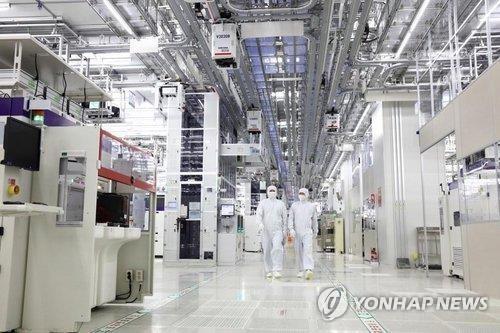- California Assembly OKs highest minimum wage in nation
- S. Korea unveils first graphic cigarette warnings
- US joins with South Korea, Japan in bid to deter North Korea
- LPGA golfer Chun In-gee finally back in action
- S. Korea won’t be top seed in final World Cup qualification round
- US men’s soccer misses 2nd straight Olympics
- US back on track in qualifying with 4-0 win over Guatemala
- High-intensity workout injuries spawn cottage industry
- CDC expands range of Zika mosquitoes into parts of Northeast
- Who knew? ‘The Walking Dead’ is helping families connect
Industrial output falls for 3rd month in Nov.; construction slump continues
South Korea’s industrial output fell from a month earlier in November on dwindling automobile production despite robust growth in the chip sector, data showed Monday.
Industrial production went down 0.4 percent, marking the third consecutive month of decline, according to the data compiled by Statistics Korea.
The decline was attributed to a 5.4 percent on-month drop in automobile production, largely driven by labor strikes in the sector.
In contrast, the semiconductor sector posted a 3.9 percent on-month increase, fueled by strong overseas demand.

“The strikes at automobile parts suppliers that began in October continued into November, significantly affecting production of finished car components,” said Gong Mi-sook, an official from Statistics Korea. “Semiconductor production maintains its strong performance.”
Output in the financial and insurance sector fell 2.9 percent compared to the previous month, largely attributed to a slowdown in loan growth.
In on-year terms, overall industrial output declined 0.3 percent in November.
Retail sales, a key indicator of private spending, grew 0.4 percent from the previous month, rebounding after two consecutive months of decline.
The growth was driven by a 4.1 percent increase in sales of semidurable goods, such as clothing, ahead of the winter season.
Sales were further bolstered by large-scale consumer promotion events, which led to increased purchases of clothing, footwear and hobby-related items.
However, in on-year terms, retail sales dipped 1.9 percent, continuing a longer-term downward trend.
Facility investment saw a sharp decline in November, falling 1.6 percent from the previous month, primarily due to a slump in the machinery sector.
This marked the second consecutive month of decline.
Nevertheless, the agency said the decrease was partially influenced by a base effect from previous strong growth.
Compared to a year earlier, facility investment rose by 2.6 percent, continuing an overall upward trend.
Construction investment weakened, with construction orders slipping 0.2 percent from a month earlier, marking the seventh consecutive month of decline, the longest losing streak since the agency began compiling relevant data in August 1997.
The finance ministry said the government plans to deploy all available resources to boost domestic demand, which has had a slower-than-expected recovery amid ongoing political turmoil.











